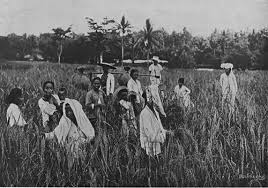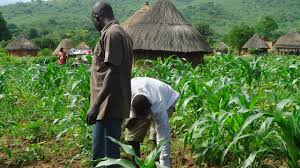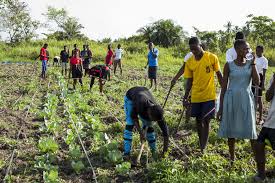The history of any programme is necessary in order to establish a basis for new approaches and innovations. The history of rural youth programmes in agricultural extension is convoluted but could be divided into two main periods. These two periods are the pre-colonial/colonial period and the post-colonial period.
Read Also: Appearance, Features and Farming Guide of Cod Fish
Pre-Colonial and Colonial Era of Rural Youth Agricultural Extension Programmes

The pre-colonial/colonial era of rural youth extension programmes was characterised by missionary extension activities in the rural areas. When the missionaries visited the rural areas, they attended to the needs of the rural inhabitants.
They provided free medical services and even settled among the people in order to properly acquaint themselves with the problems of the people. The main focus of instructions in the missionary schools was the teaching of Christianity as a new religion.
The missionaries were credited with the status of being the pioneers of western education in Africa. Many children and youth were admitted into the schools. The products of the missionary schools became interpreters, court clerks, and teachers. During the missionary period, many associations and clubs were formed.
A typical example was the Young Men Christian Association (YMCA), which exists till today. The period witnessed the introduction of a social welfare department in the old colony of Lagos.
The Department of Botanical Research was established in 1893 with headquarters at Olokemeji in the former Western Region (Jibowo, 2005; Fanfuwa, 1982). The specific objectives of rural youth programmes in agricultural extension during the period were to:
i. reduce the problem of increasing juvenile delinquency such as stealing, drug abuse, indolence, and idleness;
ii. promote community development through group activities for both boys and girls;
iii. encourage youths to make good use of their leisure time. Recommended regular hours were between 6.00 am and 3.30 pm. The leisure hours were between 5.30 pm and 7.30 pm; and
iv. develop the spirit of self-reliance and dignity in manual labour (Ovwigho, 2004).
Read Also: Health, Lifespan and Farming Guide of Catfish
Post-Colonial Period of Rural Youth Agricultural Extension Programmes

The objectives of the post-colonial period of rural youth programmes were similar to those of the colonial era. However, emphasis was laid on concrete agricultural development.
There was also a strong need to start the education of the young people early in life since the mind was usually more fertile and receptive to new ideas at a younger age.
This understanding led to the establishment of various agricultural training programmes, schools of agriculture, and rural youth programmes in agricultural extension, including the Farm Settlement Schemes, Back to Land Programme, Operation Feed the Nation, Green Revolution, and National Directorate of Employment.
During this period, rural youth programmes were transferred to the Ministry of Agriculture and Natural Resources.
Today, NGOs and corporate bodies, including Shell Petroleum Development Company of Nigeria (SPDC), Mobil, Chevron, and AGIP, have established various rural youth programmes for the purpose of agricultural development (Jibowo, 2005; Ovwigho, 1985; Ovwigho and Ifie, 2009).
Comparison of Pre-Colonial/Colonial and Post-Colonial Rural Youth Agricultural Extension Programmes
During the pre-colonial/colonial history of rural youth programmes in agricultural extension, training was organised mainly through apprenticeship. Jibowo (2005) noted that conscious efforts were made in the selection, introduction, and teaching of practices involved in producing good varieties of crops and breeds of animals during the colonial era.
The contents of the training programme also included good character development and citizenship training. The colonial masters visited villages in order to teach the youths better agricultural practices and innovations. However, during the post-colonial era, formal institutions were established to carry out the training of youths in agriculture.
The formal institutions include the Ministry of Agriculture and Natural Resources, National Directorate of Employment (NDE), universities, and colleges. Modern innovations and practices were disseminated to the youths through these formal institutions.
The pre-colonial/colonial period of rural youth programmes in agricultural extension was not radically different from the post-colonial era in terms of objectives. The differences in both periods, however, lay in the approaches and the content of training programmes.
The pre-colonial/colonial period placed more emphasis on moral development and citizenship training, while in the post-colonial period, emphasis was laid on concrete agricultural development.
The pre-colonial history of rural youth programmes in agricultural extension was carried out mainly through informal institutions, while the post-colonial history was characterised by formal training.
Do you have any questions, suggestions, or contributions? If so, please feel free to use the comment box below to share your thoughts. We also encourage you to kindly share this information with others who might benefit from it. Since we can’t reach everyone at once, we truly appreciate your help in spreading the word. Thank you so much for your support and for sharing!

